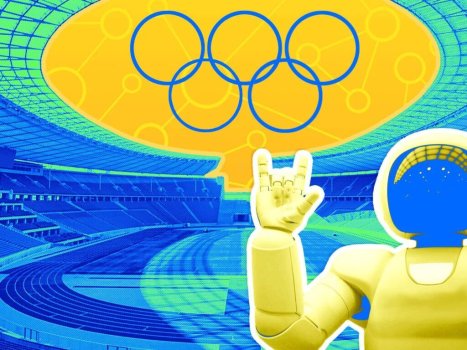K
Kathleen Martin
Guest
Every two years, we eagerly watch from our homes as swimmers break world records or skiers fly down the slopes, and with every passing event, IoT becomes more and more embedded in all of our relationships with The Olympics. From how we watch and engage with the athletes and the sports, to training, to even how judges assess athletes’ technique and performance, the Internet of Things is playing an increasingly valuable role in not just the Olympic Games, but in all sports as we know it.
IoT Technology in the Olympics
At the Rio and Tokyo Olympics, IoT technology improved the accuracy and interactivity of the Games. These are some of the top six IoT technologies used in the recent Olympic Games.
Smart Stadiums
One of the biggest IoT providers in Japan introduced the smart stadium to the Tokyo Olympics. Smart stadiums enhanced the user experience for spectators at the Olympics and for people watching at home. A smart stadium is blanketed with wireless connectivity that allows everyone in the stadium to have fast and easy access to the internet. For viewers at home, the smart stadiums increase instant replays on the stadium’s app that make it easier to see what’s happening in real-time. Athletes are able to see real-time metrics as well, thanks to the connectivity in the stadium.
For attendees in the stadium, smart stadiums enhance the experience of being in the stadium. Spectators can watch the real-time replays while panning their phones over different areas of the stadium for more details and an up-close view. Augmented reality lets spectators zoom in on athletes for their stats and performance. Attendees can also monitor concessions and restrooms to limit the amount of time spent in line.
Robot Assistants
Toyota helped develop robot assistants for the Tokyo Olympics. These robots greet spectators and athletes as well as provide on-field assistance. The robots can retrieve javelins and hammers to return to athletes, and they can guide staff across these dangerous fields to help them do their jobs while keeping them clear of thrown equipment. To make sure these robots can assist everyone, they are programmed to understand and speak many languages. IoT connectivity allows the robots to communicate, move, scan, and choose routes.
Continue reading: https://www.iotforall.com/how-iot-is-involved-in-the-olympics
IoT Technology in the Olympics
At the Rio and Tokyo Olympics, IoT technology improved the accuracy and interactivity of the Games. These are some of the top six IoT technologies used in the recent Olympic Games.
Smart Stadiums
One of the biggest IoT providers in Japan introduced the smart stadium to the Tokyo Olympics. Smart stadiums enhanced the user experience for spectators at the Olympics and for people watching at home. A smart stadium is blanketed with wireless connectivity that allows everyone in the stadium to have fast and easy access to the internet. For viewers at home, the smart stadiums increase instant replays on the stadium’s app that make it easier to see what’s happening in real-time. Athletes are able to see real-time metrics as well, thanks to the connectivity in the stadium.
For attendees in the stadium, smart stadiums enhance the experience of being in the stadium. Spectators can watch the real-time replays while panning their phones over different areas of the stadium for more details and an up-close view. Augmented reality lets spectators zoom in on athletes for their stats and performance. Attendees can also monitor concessions and restrooms to limit the amount of time spent in line.
Robot Assistants
Toyota helped develop robot assistants for the Tokyo Olympics. These robots greet spectators and athletes as well as provide on-field assistance. The robots can retrieve javelins and hammers to return to athletes, and they can guide staff across these dangerous fields to help them do their jobs while keeping them clear of thrown equipment. To make sure these robots can assist everyone, they are programmed to understand and speak many languages. IoT connectivity allows the robots to communicate, move, scan, and choose routes.
Continue reading: https://www.iotforall.com/how-iot-is-involved-in-the-olympics

